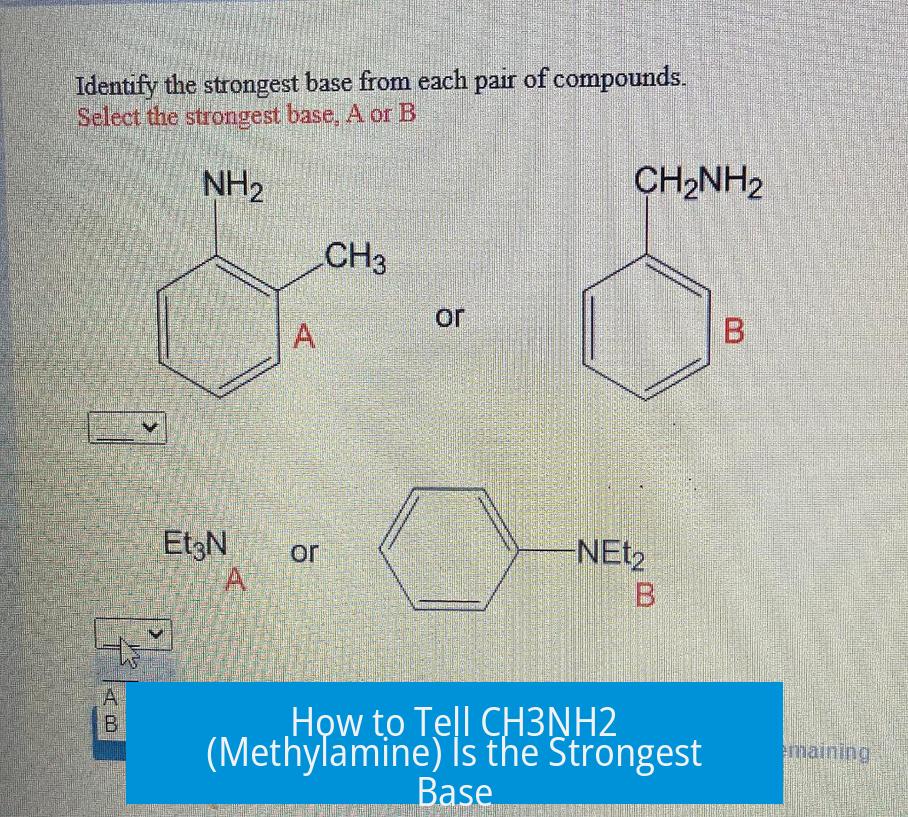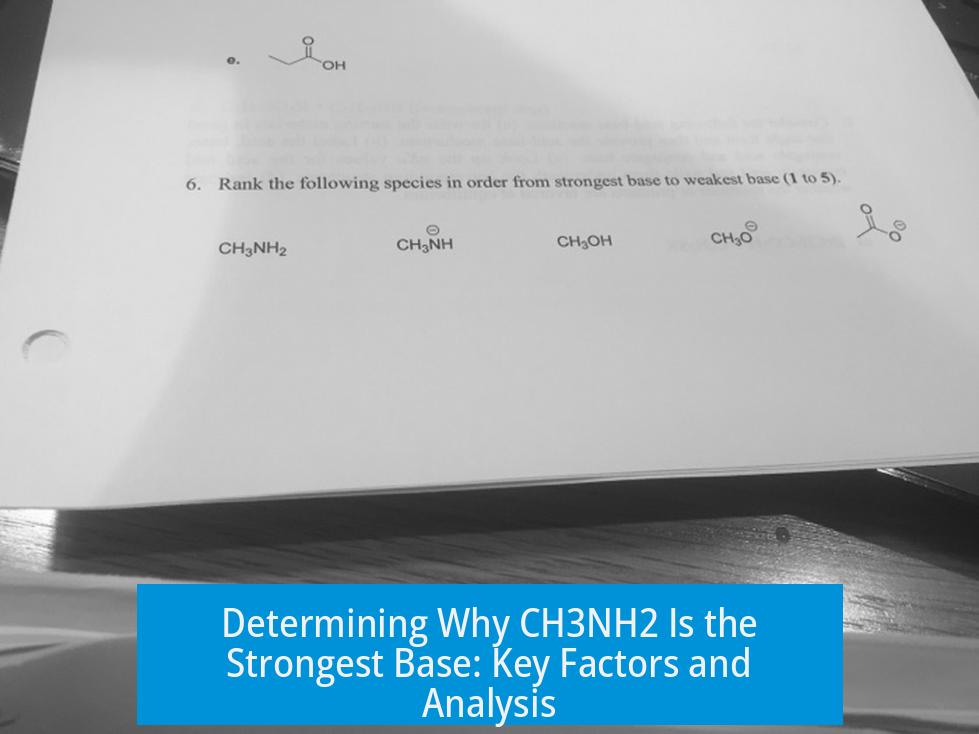How to Tell CH3NH2 (Methylamine) Is the Strongest Base

Methylamine (CH3NH2) is the strongest base among ethane, methanol, and itself because the nitrogen atom carries a lone pair of electrons that it donates more readily than oxygen in methanol, while ethane lacks any lone pairs to donate.
Lone Pair Availability and Basicity
A base donates a lone pair of electrons to accept protons. Ethane (C2H6) has no lone pairs, only electron pairs involved in stable bonds. Thus, it cannot donate electrons and is not basic.
Methylamine and methanol both have lone pairs, attached to nitrogen and oxygen atoms, respectively. These lone pairs are crucial for their basic behavior.
Electronegativity and Electron Donation
The main difference between methylamine and methanol lies in which atom carries the lone pair. Nitrogen in methylamine is less electronegative than oxygen in methanol.
- Nitrogen’s lower electronegativity means it holds its lone pair less tightly.
- This makes the lone pair on nitrogen more available to bond with a proton.
- Oxygen’s higher electronegativity keeps its lone pair held more strongly, reducing its basicity.
No Resonance Effects Influence Basicity
Neither methylamine nor methanol experiences resonance that delocalizes the lone pairs. The basicity depends predominantly on the atom’s electronegativity and the availability of the lone pair electrons.
Summary Table of Base Strength Factors
| Compound | Basic Atom | Lone Pair Availability | Electronegativity of Atom | Relative Basicity |
|---|---|---|---|---|
| Ethane (C2H6) | None | No lone pair | – | Non-basic |
| Methanol (CH3OH) | Oxygen (O) | Lone pair present | High electronegativity | Less basic |
| Methylamine (CH3NH2) | Nitrogen (N) | Lone pair present | Lower electronegativity | Most basic |
Key Takeaways
- Basicity depends on availability and ease of donating lone pair electrons.
- Ethane is not basic due to lacking lone pairs.
- Nitrogen’s lone pair in methylamine is more easily donated than oxygen’s in methanol.
- Lower electronegativity of nitrogen leads to stronger basicity of methylamine.
What key factor makes CH3NH2 the strongest base compared to similar molecules?
CH3NH2 has nitrogen with a lone pair of electrons. Nitrogen is less electronegative than oxygen, so it donates its lone pair more easily. This makes CH3NH2 a stronger base than molecules with oxygen.
Why does the electronegativity of the atom affect the basicity of CH3NH2?
Nitrogen in CH3NH2 is less electronegative than oxygen in CH3OH. Because nitrogen holds its lone pair less tightly, it donates electrons more readily, increasing basicity.
How does the presence of lone pairs influence the strength of a base like CH3NH2?
Bases need lone pairs to donate. CH3NH2 has a lone pair on nitrogen available for bonding. This lone pair can easily attach to protons, making it a stronger base.
Why is ethane not considered a base when comparing it to CH3NH2?
Ethane has no lone pairs on its atoms. Without a lone pair to donate electrons, ethane cannot act as a base.
Does resonance affect why CH3NH2 is the strongest base?
No, resonance does not play a role here. The main factor is the basic atom’s electronegativity and its ability to donate lone pair electrons.





Leave a Comment